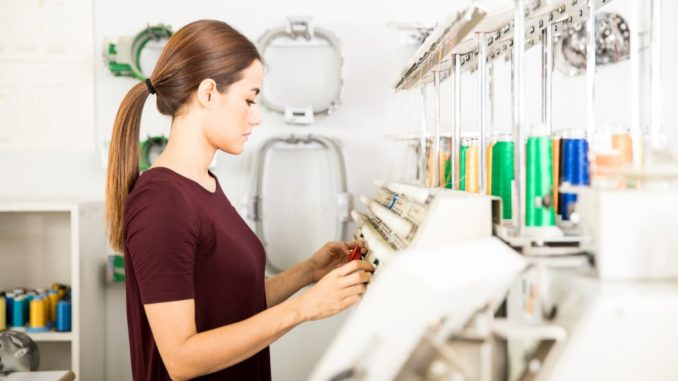
According to a State Industry Review by the Advertising Specialty Institute, the decorated-apparel has had a growth of 3.66 percent in 2018. Industry professionals predict that the market will continue to stay level at the end of this year.
With a steady market in the next foreseeable future, why not turn your embroidery hobby into a business? You can earn a living doing something you love and, at the same time, you’re providing other people with your high-quality embroidered products.
Here’s what you need to remember in starting an embroidery business.
A Pattern for Success
Highly customizable and adaptable, embroidery products remain popular among artisans, students, university personnel, associations, clubs, retailers, non-profit, and construction clients.
Some business opportunities you can explore in the embroidery industry are producing your own embroidery products, making your own designs, and marketing these to your intended customers. You can even explore embroidery franchise options if starting your business from scratch seems a bit daunting. A franchise would mean you’d already have a market for your products.
According to a report by Forbes, however, the craft industry needs to learn how to attract new customers, like millennials. This generation, which comprises most of the workforce in the world and has purchasing power, has an affinity for customizable products and starting artistic hobbies.
Reports suggest that embroidery and embroidery products can appeal to the younger generation. The largest percentage of crafters is millennials, which make up 41 percent, followed by generation X, which comprise 36 percent, and then baby boomers, which comprise the remaining 23 percent.
A Smooth Stitch
Like any business venture, you need to plan before you begin anything, especially if you’ve decided to start from scratch. Where do you want your business to go? What products and services can you provide? Who are your target customers?
-
Draft a business plan
Your business plan will detail your business objectives, capital and expected revenue, marketing strategies, materials, business model, and what you need to do as your business progresses.
-
Prepare your materials
If you want to stick with making small, homemade embroidery products, you can choose to continue making products by hand. But if you plan on taking on large-scale products with short deadlines, you should invest in embroidery machines.
Prepare and stock up on materials you know you’ll use heavily. List your expenses and compare these with your income to determine profit later on.
-
Set up your website
Working from the comfort of your home can put you at a disadvantage because not a lot of people see your business. Setting up a website lets more people know about your products and services. Through your website, customers can learn about your business, what you do, where to find you, and how to buy.
This way, your potential customers extend from local buyers to as far as your delivery fees can cover. Customers can order by piece or in bulk through your site without having to visit your shop. This convenience might result in a repeat purchase in the future.
-
Find your customers

Creative hobbyists, students, businesses, collectors, and organizations are all potential customers in the decorator apparel industry. You can choose to cater to just one, or cater to all. Your products and services dictate what kind of customers you’ll attract, so keep that in mind if you plan on catering to everyone.
Turn your hobby into a profitable venture by exploring business opportunities in embroidery. You can choose to run a business commercially or run one from home. Applying business strategies to your startup embroidery business can help you ease into the market with minimal difficulty.
